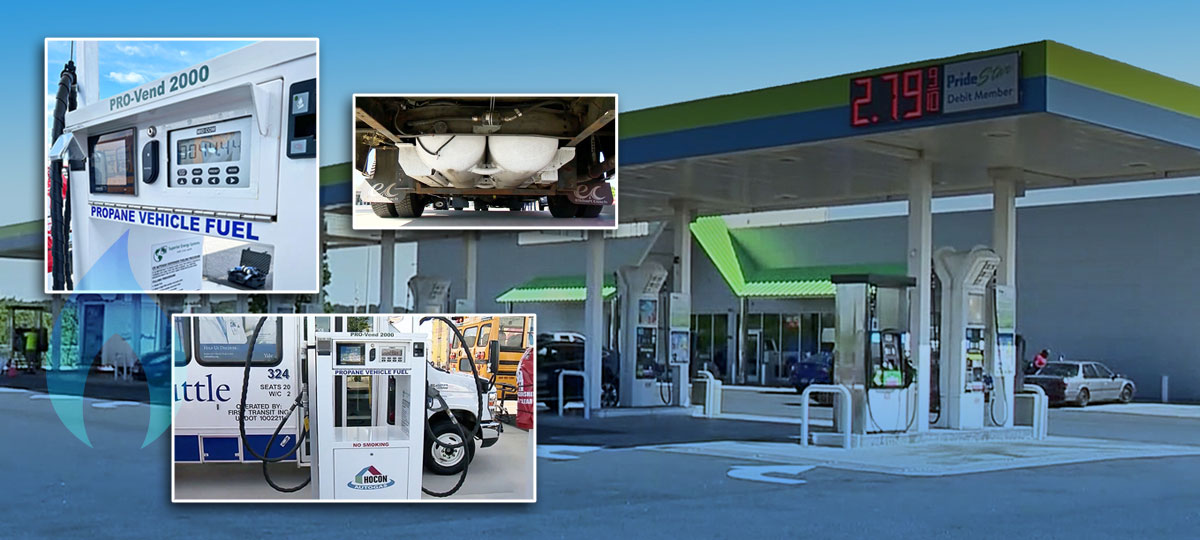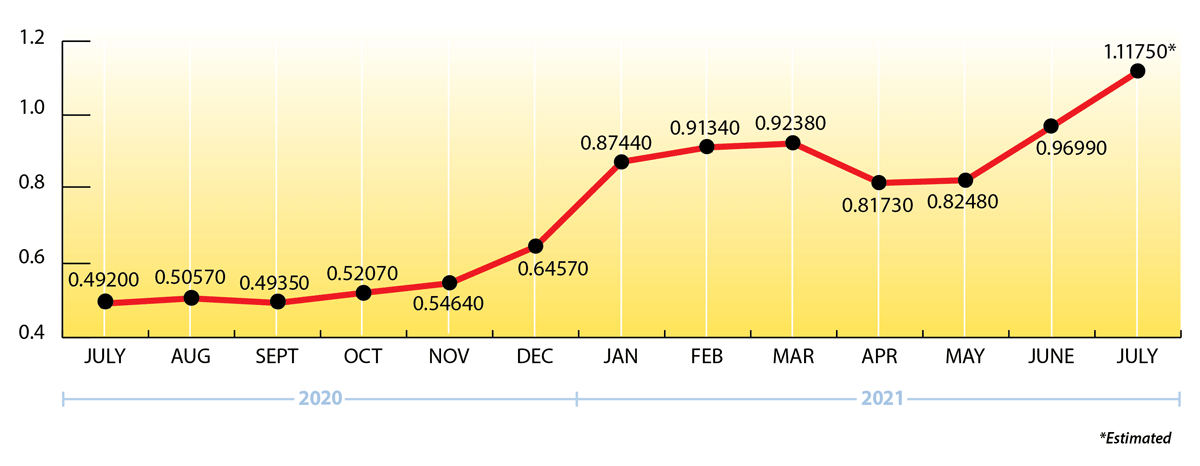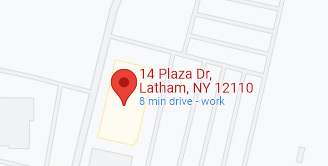Propane & Alternative Energy Refueling Stations
 David Gable, president of Hocon Gas, was instrumental in working with the Capitol Clean Cities of Connecticut council to develop an alternative energy refueling station at the Pride Travel Center in Hartford, CT, featuring propane, electricity, and hydrogen.
David Gable, president of Hocon Gas, was instrumental in working with the Capitol Clean Cities of Connecticut council to develop an alternative energy refueling station at the Pride Travel Center in Hartford, CT, featuring propane, electricity, and hydrogen.
It's the first of its kind in the United States.
David talked with us recently about this project as well as his thoughts on the future of meeting net-zero emission goals with propane autogas.
The Interview
HEFFRON: What can you tell us about the collaboration that was involved?
GABLE: Thanks for reaching out regarding our involvement with the Pride Travel Center in Hartford, CT. I’m told it began as a joint venture between Air Liquide and Toyota that approached Bob Bolduc, the developer of the travel center, about installing a hydrogen refueling station at the proposed development. From there Craig Peters from Capitol Clean Cities, who we have worked with for a number of years, approached me about my interest in building a public propane autogas station at the location and ultimately Tesla got involved along with some folks who installed level 2 fast chargers.
HEFFRON: The propane dispenser includes fleet management software that tracks important data like driver and vehicle information as well as gallons pumped. In terms of logistics, what’s involved before fleet drivers can pull into the refueling station and fill their vehicles with propane? How easy is the process?
GABLE: We worked closely with Superior Energy Systems from Ohio. They did a great job on the retrofit of the storage tank and gave us assistance with the installation as well as programming the Pro-Vend autogas dispenser we installed. We currently use fobs to identify the fleet, turn on the dispenser, identify and fill the vehicle.
Only those fleets who have been trained and documented can currently access the dispenser which is also equipped with a credit card reader. We equipped the dual hose dispenser with euro nozzles and pre-piped the other island for a second dispenser should the first one become wildly successful. Refueling with the euro nozzle is simple, requires no personal protection, and we are seeing fill times of 12+ gallons per minute depending on the vehicle fuel system and size of fill line. The process seems quite seamless. Even a caveman can do it.
HEFFRON: What are your thoughts regarding the future of propane autogas?
GABLE: In my opinion, the propane industry has a lot to offer America’s transportation sector in addition to our conventional markets. As we have moved from a wood based society to coal to oil and now towards a natural gas based society, I think propane (which significantly reduces greenhouse gas emissions) has a great opportunity.
Although many municipalities are all about reduced emissions they don’t understand that while an electric vehicle has no tailpipe emissions, it still gets its power from somewhere! That baseload power comes from coal, nuclear, natural gas, and only about 5% from renewable energy sources. Electric-powered vehicles work pretty well for the light-duty commuter sector (which doesn’t produce much in the way of emissions to begin with), but the propane industry can help with the Class 4-7 vehicles which move goods and people locally in heavier duty, gas-guzzling vehicles where our industry can really shine and electricity is still a science experiment.
In my opinion, LNG is going to be confined to Class 8 over-the-road vehicles. That being said, it’s hard to turn the Queen Mary around, and to get the general public and elected officials to “get it” requires an awful lot of hard work. And when global crude prices are low and the cost of fuel at the pump is cheap (although the pandemic has currently changed that), no one wants to be bothered with thinking about something that may make their lives more complicated.
HEFFRON: Distribution and the availability of any commodity is key to its success. How does an alternative energy refueling station with propane like this one become a movement?
GABLE: So we built this station and I think we need more people to do the same so that we as an industry can reduce some “range anxiety” and make propane look more mainstream. The best thing that came out of the grand opening was having a conversation with a government official about how much the propane industry has already reduced emissions in CT, given that some 700 school buses have already migrated from diesel fuel to propane autogas instead of waiting for some unknown future time when electricity can power everything. Until then the medium-duty segment continues to burn gasoline and diesel when propane can help right now.
HEFFRON: Thank you for your wonderful insights David!
What’s Happening With Propane Prices?
Propane prices haven’t been this high since February, 2014. So where now?
In the short term (three months), it’s hard to imagine any scenario short of a new virus strain that shuts down countries again, or an OPEC squabble that gets out of control, that will drive prices down substantially.
Crude oil prices and natural gas prices (the highest level since November, 2018) are just too strong right now and energy demand is high.
The good news is that there is still time to contract more propane supply with us, or convert more index-priced supply over to a fixed price, to protect your margins and ensure that your supply commitments (index and fixed) match up with your sales and your projected needs.
Propane Price Chart

Weekly Inventory Numbers
In line with industry expectations, U.S. propane inventories showed a build of 1.59 mmbbls. for the week ending July 9, 2021. That brings national inventory levels to 59.56 mmbbls., about 26 percent behind last year and 18 percent behind the 5-year average.
PADD 2 (Midwest/Conway) inventories had a decent build of .719 mmbbls. They currently stand at 17.45 mmbbls., roughly 13 percent behind last year.
PADD 3 (Gulf Coast/Belvieu) inventories seem to be treading water lately, showing an anemic build of .264 mmbbls after showing a minimal draw the week before. They now stand at 32.13 mmbbls., nearly 33 percent behind last year.
The Skinny
The collaboration between government officials and business owners, and the inclusion of propane at the alternative energy refueling station at the Pride Travel Center in Hartford, CT, gives our industry the template for autogas growth.
It’s especially applicable for fleet vehicles because low-emissions autogas helps medium-duty vehicles be in compliance with clean-air energy mandates without sacrificing power or range.
And there’s nothing wrong with keeping more U.S.-made propane right here in America, is there?
Get Stephen's insights on propane delivered to your inbox every month.
Sign up for our monthly newsletter here.
For more frequent updates and industry news, join us on LinkedIn.
NOTE: The views and opinions expressed herein are solely those of the author, unless attributed to a third-party source, and do not necessarily reflect the views of Ray Energy Corp, its affiliates, or its employees. The information set forth herein has been obtained or derived from sources believed by the author to be reliable. However, the author does not make any representation or warranty, express or implied, as to the information’s accuracy or completeness, nor does the author recommend that the attached information serve as the basis of any buying decision and it has been provided to you solely for informational purposes. © 2011-2021 Ray Energy Corp. All rights reserved. Any reproduction, representation, adaptation, translation, and/or transformation, in whole or in part by whatsoever process, of this site or of one or several of its components, is forbidden without the express written authorization from Ray Energy Corp.

